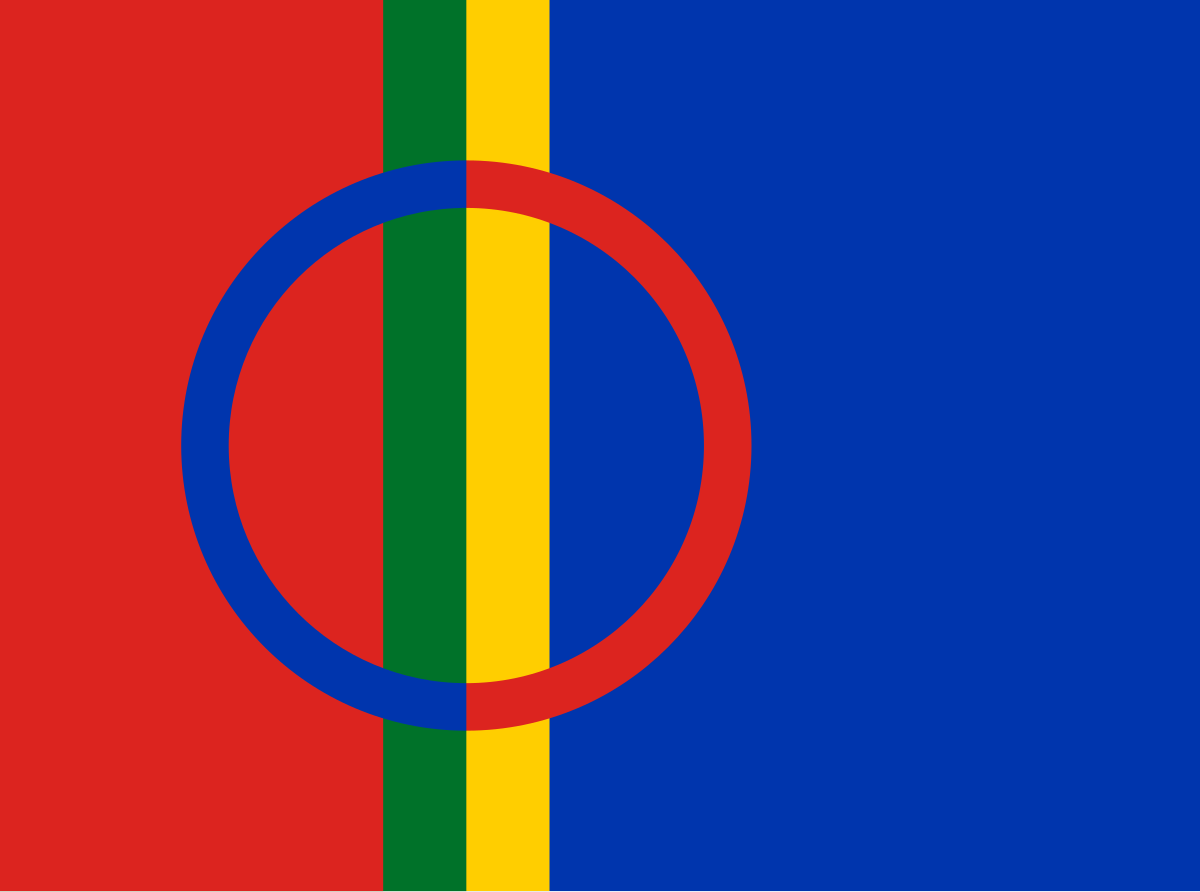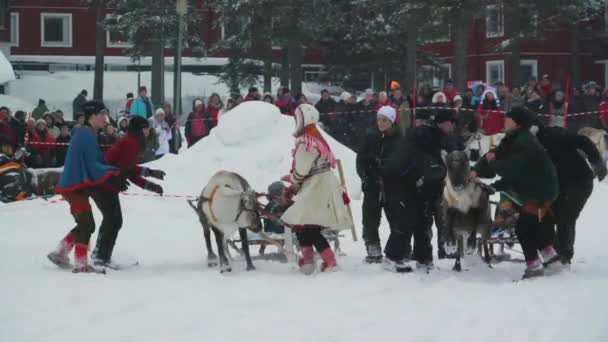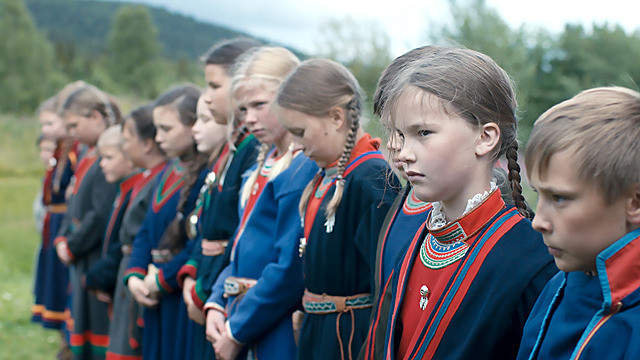Sámi People
・The Sámi are the Indigenous people of Northern Europe, living across the Arctic regions of Norway, Sweden, Finland, and Russia's Kola Peninsula.
・Known for their reindeer herding, traditional joik singing, and vibrant clothing and spiritual traditions, they maintain a deep cultural bond with nature.
Location
・Their homeland is called Sápmi, covering
History
・The Sámi have lived in the Arctic for thousands of years, evolving from hunter-gatherers to reindeer pastoralists.
・They faced forced Christianization, land appropriation, and assimilation policies from the Middle Ages through the 20th century.
・Since the 1980s, cultural revitalization has included Sámi parliaments, language protection, and international recognition of Indigenous rights.
Culture
・Reindeer Herding:Seasonal migration between winter and summer pastures.
・Traditional Dress (Gákti): Bright clothing patterns signify region, family, and marital status.
・Joik (Yoik):A unique form of melodic chant evoking people, animals, or places.
・Cuisine:Reindeer meat, fish, wild berries, and dairy-based dishes.
Sámi Symbols and Flag

Sámi Flag (adopted in 1986)
・Red, blue, green, and yellow represent colors of the traditional clothing.
・Circle represents the sun (red) and moon (blue).
Other cultural symbols
・Reindeer, sun and nature worship, shamanic drums.
Language
・The Sámi speak several languages in the Uralic language family, related to Finnish and Hungarian.
・There are 9 main Sámi languages, often mutually unintelligible.
Major ones include
・Northern Sámi (most spoken)
・Skolt Sámi
・Lule Sámi, etc.
Common Northern Sámi Greetings and Phrases
| English | Northern Sámi | Pronunciation |
| Hello | Bures | Boo-res |
| Good morning | Buorre iđit | Boo-reh ee-dit |
| Thank you | Giitu | Ghee-too |
| Nice to meet you | Don leat buorre | Don leat boo-reh |
| Good night | Buorre idja | Boo-reh id-yah |
| Delicious | Leago buorre | Leh-ah-go boo-reh |
| Fun/Enjoyable | Illu | Ill-oo |
Region
Continent: Europe
・Northern Norway, Sweden, and Finland
・Northwestern Russia (Kola Peninsula).
・Estimated population: 80,000–100,000 across the region.
Access Guide
The currency of the Sámi people is the Norwegian Krone (NOK, kr).
The currency shown here is the official currency (Krone) of Norway, where the Sámi people mainly live. Different currencies may be used in other countries.
Sami Region
Access to Sami Region (Tromsø, Norway) from Major Cities
| Departure City | Direct/Transit | Arrival Airport | Flight Time (approx.) | Reference Fare (one-way/round-trip, Economy) |
| Los Angeles | LA → via London/Amsterdam, Oslo → Tromsø | Tromsø Airport (TOS) | 17–26 hours | US$900–1,600 |
|---|---|---|---|---|
| New York | NY → via Oslo → Tromsø | Tromsø Airport (TOS) | 13–21 hours | US$800–1,400 |
| London | London → via Oslo → Tromsø | Tromsø Airport (TOS) | 7–10 hours | £230–400 |
| Tokyo | Tokyo → via Helsinki/Copenhagen, Oslo → Tromsø | Tromsø Airport (TOS) | 19–28 hours | ¥160,000–260,000 |
| Sydney | Sydney → via Dubai/Singapore, Oslo → Tromsø | Tromsø Airport (TOS) | 27–38 hours | A$1,600–2,700 |
| Hong Kong | Hong Kong → via Copenhagen/Helsinki, Oslo → Tromsø | Tromsø Airport (TOS) | 21–30 hours | HK$7,200–13,000 |
| Shanghai | Shanghai → via Amsterdam/Helsinki, Oslo → Tromsø | Tromsø Airport (TOS) | 20–28 hours | CNY4,800–8,200 |
| Singapore | Singapore → via Copenhagen/Doha, Oslo → Tromsø | Tromsø Airport (TOS) | 20–29 hours | S$1,300–2,100 |
Note:During the winter season, this region is a popular destination for viewing the Northern Lights! Travel time and prices can vary significantly depending on the season, layovers, and flight availability.
Language Origins
・Sámi languages developed from Uralic roots, splitting from Finno-Ugric branches thousands of years ago.
・Strong ties to reindeer herding and Arctic survival are embedded in the vocabulary.
・Written documentation began in the 1700s, and revitalization continues today.
Writing System
・Modern Sámi languages use Latin alphabets with special characters (e.g., ŋ, đ, č).
・Written forms began standardizing in the 18th century.
・Now used in education, signage, and official documents (depending on country).
Detailed Habitat
・Norway:Troms and Finnmark (largest Sámi population)
・Sweden:Norrbotten County
・Finland:Lapland region
・Russia:Lovozero area of the Kola Peninsula
Traditional Games of the Sami People
1.Reindeer Sled Racing
・Popular at festivals; both traditional and sport versions exist.
2.Stone Throwing (Bealljeháhkat)
・Target game using small stones, originally hunting training.
3.Joik Battles
・Competitive or improvisational joik singing.
4.Woodcraft Play
・Children mimic adults by crafting wooden sleds, knives, and tools.
Introduction video


The Sámi people's harmony with the Arctic, their spiritual joiks, and vibrant traditions offer a unique glimpse into one of Europe's oldest and most resilient Indigenous cultures.
